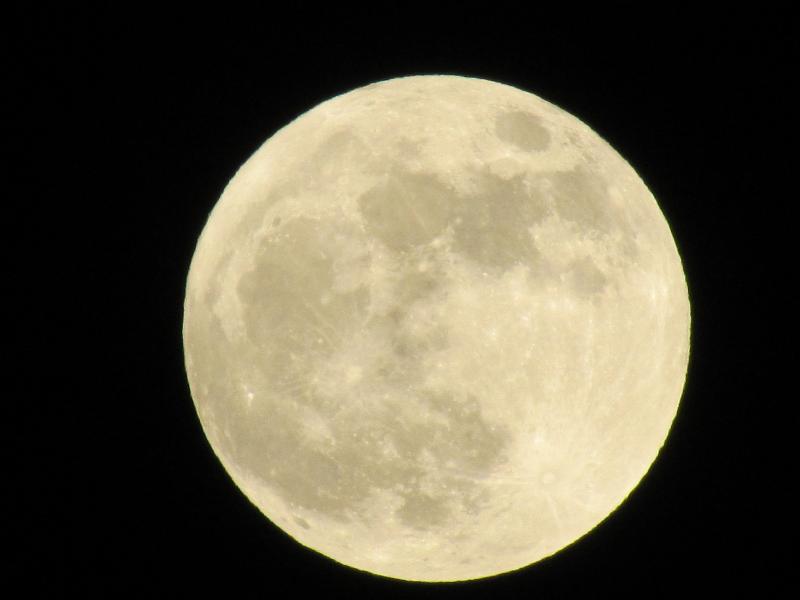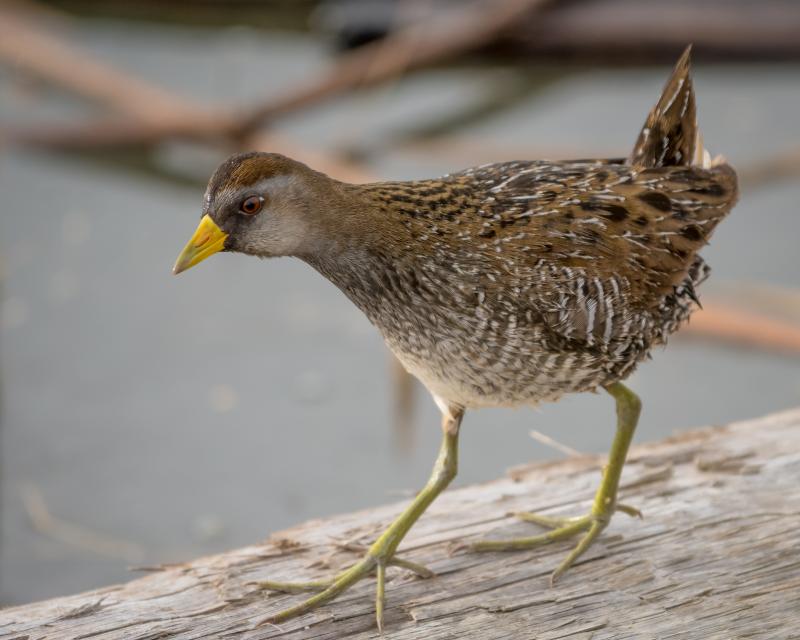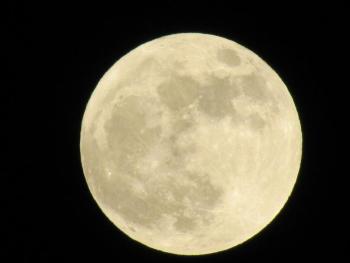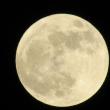Revealing the Mysteries of What Flies Over Us Each Night
 Millions of birds are in flight at night across the U.S. during spring migration. Courtesy of Jeff Wells
Millions of birds are in flight at night across the U.S. during spring migration. Courtesy of Jeff Wells
 Soras are usually seen only in marshes, but the authors’ night migration bird monitoring station has detected a number these secretive birds as they pass over during night migration. (Photo by Becky Matsubara from El Sobrante, California / CC BY (https://creativecommons.org/licenses/by/2.0)
Soras are usually seen only in marshes, but the authors’ night migration bird monitoring station has detected a number these secretive birds as they pass over during night migration. (Photo by Becky Matsubara from El Sobrante, California / CC BY (https://creativecommons.org/licenses/by/2.0)
 Millions of birds are in flight at night across the U.S. during spring migration. Courtesy of Jeff Wells
Millions of birds are in flight at night across the U.S. during spring migration. Courtesy of Jeff Wells
 Soras are usually seen only in marshes, but the authors’ night migration bird monitoring station has detected a number these secretive birds as they pass over during night migration. (Photo by Becky Matsubara from El Sobrante, California / CC BY (https://creativecommons.org/licenses/by/2.0)
Soras are usually seen only in marshes, but the authors’ night migration bird monitoring station has detected a number these secretive birds as they pass over during night migration. (Photo by Becky Matsubara from El Sobrante, California / CC BY (https://creativecommons.org/licenses/by/2.0)
You may remember that most of our birds do the bulk of their migrating at night, which we have written about in previous columns. As they migrate, many species regularly give short calls. The honks of night-migrating Canada geese are instantly recognizable. But the calls of many of the songbirds might sound more like insects to some people. The calls of the Swainson’s thrush sound remarkably like the calls of the spring peeper—except that they emanate from hundreds of feet in the sky where no frog could be. By listening to or, even better, recording the calls of night-migrating birds, it’s possible to find out what is passing by overhead during the night.
We have been using our nocturnal bird call monitoring station again after a number of years of its absence and are enjoying remembering the wonderful insight it gives us into the stream of migrating birds that pass over us while we sleep. The “station” as we call it, has a number of pieces. To start, it is a homemade microphone mounted inside a large plastic flower pot with a piece of an old sheet over the top for protection from the elements. We place the flower pot in a chair on our porch and run a microphone cable from it under the door that snakes its way to the kitchen table. The cable is plugged into a small pre-amp box on the table. A smaller cable runs out of the box and plugs into an old laptop computer’s audio input jack.
That computer is too old to do much anymore but it can run two small software programs that evaluate all of the incoming sounds and save any that meet the frequency and duration of possible bird calls. Each possible sound is saved automatically in a small file with a file name that provides the date and the time, down to a hundredth of a second.
Unfortunately, the “possible” bird call sounds the software saves typically includes many non-bird sounds—wind chimes, car honks, slamming doors in the neighborhood, and sometimes even people having very loud conversations as they pass on the sidewalk some distance away. Each morning over a cup of tea we can sort through the hundreds, sometimes thousands, of sound files and find and save all the bird sounds. The rest are deleted into the computer’s trash bin.
Fortunately, we have another computer program that makes it easy to do that sorting, and within a few minutes we usually are able to get a peek into the mysteries of the past night’s bird migration that took place in the dark sky over our house.
We are still amazed at the birds that fly over us each night. On two recent consecutive nights we have had four species of thrush—wood thrush, Swainson’s thrush, hermit thrush, and veery. The only one of these four species that we have actually laid eyes on yet this spring has been the hermit thrush. Our nocturnal bird call monitoring station has let us know that we have had both sora and Virginia rail pass over. Both are small, chicken-like (but unrelated to chickens) marsh birds with big feet; they are typically very secretive and hard to detect. They rarely stray from the environs of the freshwater marshes that are their only habitat. But they do migrate south each winter; that means they have to migrate back again in the spring. They make that journey at night, and they call when they do, and that’s how we find out that they are using the air space over our town as they flap their way north.
We’ve had five species of sandpiper go over in the last few days and scads of warblers including our first-of-the-year Canada warbler. We were passed over by a common yellowthroat that broke out into a full rendition of its “witchety-witchety-witchety” song, rather than just its simple call, which is what we usually hear during their night migration. A bobolink, nearing the end of its journey from the Argentinean Pampas grasslands where it spent the winter, went over in the early morning hours giving its distinctive “bink” call as it went.
The list of fun discoveries goes on and on and makes us excited each morning to get up and check the results to see what new species we find. And then we get to go out in the yard and see which of these wonderful birds made a pit stop right here. Will we see the bright orange of a Baltimore oriole? The brilliant blue of an indigo bunting? The bright yellow of a yellow warbler? The brilliant red, white and black of a rose-breasted grosbeak? The sounds and the sights of spring bird migration renew us. We hope they are renewing you, too.
Jeffrey V. Wells, Ph.D., is a Fellow of the Cornell Lab of Ornithology and Vice President of Boreal Conservation for National Audubon. Dr. Wells is one of the nation's leading bird experts and conservation biologists and author of the “Birder’s Conservation Handbook.” His grandfather, the late John Chase, was a columnist for the Boothbay Register for many years. Allison Childs Wells, formerly of the Cornell Lab of Ornithology, is a senior director at the Natural Resources Council of Maine, a nonprofit membership organization working statewide to protect the nature of Maine. Both are widely published natural history writers and are the authors of the popular book, “Maine’s Favorite Birds” (Tilbury House) and “Birds of Aruba, Bonaire, and Curaçao: A Site and Field Guide,” (Cornell University Press).
Event Date
Address
United States
























